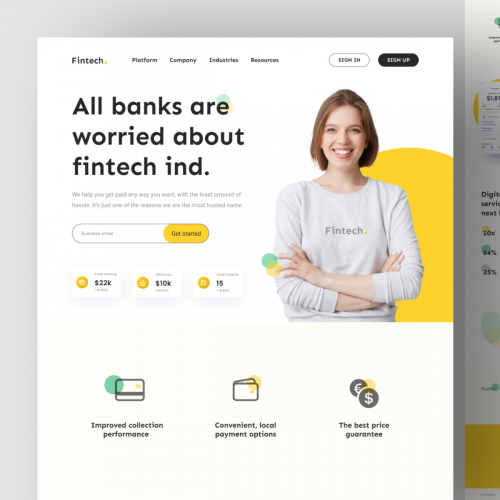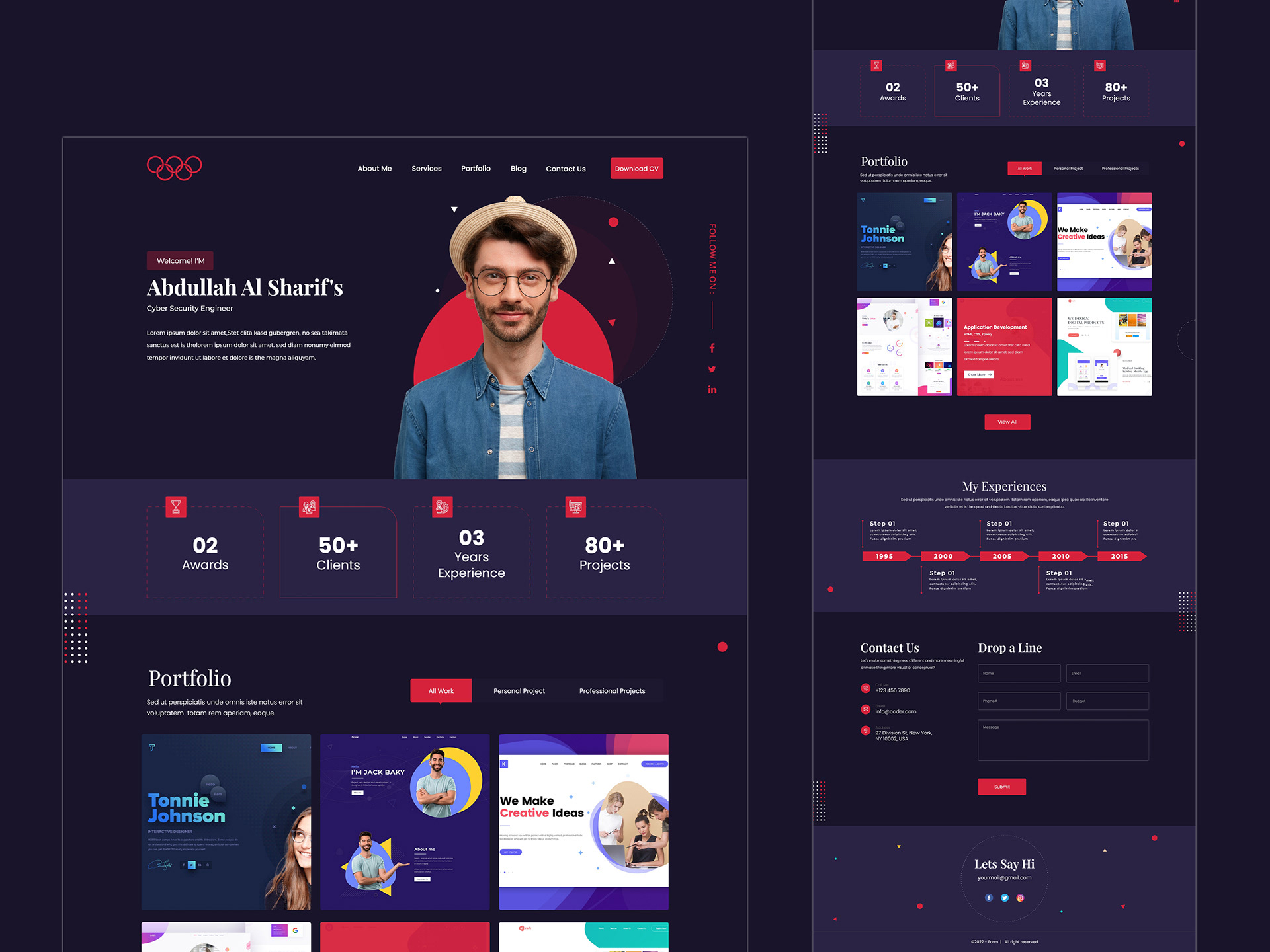Modern Web Site Layout That Catches Attention and Converts
In a progressively digital landscape, modern-day web site style has arised as an essential element in recording user interest and driving conversions. By strategically employing visual pecking order, responsive layouts, and engaging interactive components, developers can create experiences that not just draw in site visitors but additionally help with meaningful communications. Furthermore, reliable call-to-action methods play an important role in leading users towards preferred end results. As we check out these essential elements, it ends up being clear that understanding their interaction can significantly influence a website's efficiency and individual complete satisfaction. What are the crucial elements that truly make a difference?
Relevance of Visual Power Structure
Visual hierarchy is a crucial component in web site style, as it guides users' focus and boosts their general experience. By tactically organizing material, developers can route customers to the most vital information initially, thus boosting interaction and enhancing usability. Effective visual pecking order employs various techniques, including size, shade, spacing, and contrast. Bigger components naturally draw the eye, while contrasting colors can stress vital messages, making them stand apart amongst more controlled components.
Incorporating a sensible circulation in material plan is necessary; for example, putting one of the most crucial info on top of a page fosters instant acknowledgment. Consistent usage of typography, such as differing font sizes and styles, assists develop a clear content structure. This organization not just help in navigating yet also builds depend on, as customers feel a lot more comfy when they can conveniently locate what they are searching for.
Eventually, a well-executed aesthetic hierarchy not only improves visual appeal but also substantially impacts user behavior. By prioritizing necessary components and ensuring a seamless experience, developers can effectively transform visitors right into clients, enhancing the relevance of this fundamental layout principle in modern-day website development.
Responsive Layout for All Instruments
Creating a seamless experience throughout various gadgets is crucial in today's digital landscape, where individuals gain access to web sites from tablet computers, smart devices, and desktop computers alike. Receptive style is a crucial strategy that makes certain internet sites adjust fluidly to different screen dimensions, positionings, and resolutions. By employing flexible grids, photos, and CSS media questions, designers can create formats that preserve aesthetic stability and functionality, despite the tool being used.
The importance of receptive design expands beyond looks; it directly influences user engagement and conversion rates. A web site that functions well on all gadgets encourages longer sees and decreases bounce prices, as customers are more probable to communicate with web content that is easy to navigate. In addition, internet search engine, especially Google, prioritize mobile-friendly sites in their positions, making responsive design an essential element of search engine optimization (SEO)
Integrating responsive design not just boosts user experience but likewise simplifies the development process. By producing a solitary website that functions throughout tools, businesses can save time and resources compared to developing separate mobile and desktop versions. Ultimately, responsive style is a basic approach for helpful hints modern website design, making sure access and satisfaction for all users, regardless of their gadget.
Engaging Interactive Aspects
While a receptive layout lays the groundwork for a useful website, integrating interesting interactive elements is essential for capturing individual attention and cultivating deeper connections. Website Design. Interactive elements, such as animations, quizzes, and clickable infographics, produce a much more dynamic user experience, encouraging site visitors to spend even more time on the website
Integrating interactive functions other can likewise assist individuals with complicated info, making it less complicated to digest web content. For example, interactive sliders can highlight product variants, while embedded videos can give demos or testimonies that resonate even more than fixed pictures or message. Gamification techniques, like rewards for completing tasks or engaging with material, can boost individual motivation and retention.
Effective usage of interactive components not just improves the customer experience but can also lead to higher conversion rates. It is vital to balance interactivity with efficiency; extremely intricate attributes might hinder site speed, negatively affecting individual satisfaction.
Streamlined Navigation Practices
Reliable navigation is a cornerstone of any successful site, as it straight affects customer experience and web content ease of access. Streamlined navigation practices ensure that users can conveniently locate information, enhancing their interaction with the site. A well-structured navigating food selection ought to be straightforward and intuitive, commonly including a minimal number of main classifications to stay clear of frustrating site visitors.
To attain structured navigating, designers should focus on a hierarchical framework that logically arranges content. Implementing breadcrumb routes can offer users with context concerning their present location within the website, enabling smooth backtracking. In addition, using drop-down menus can successfully save space while still providing accessibility to subcategories.
Responsive style is important, as navigating must be functional throughout all gadgets (Website Design). Mobile customers, specifically, advantage from touch-friendly food selections and collapsible areas that preserve functionality without compromising aesthetic appeals

Efficient Call-to-Action Approaches
A well-crafted call-to-action (CTA) is necessary for assisting individuals toward wanted outcomes on a web site, as it encourages them to involve with material or make an acquisition. To maximize their efficiency, CTAs should be clear, compelling, and strategically put throughout the website.
First, utilize action-oriented language that connects seriousness or worth, such as "Start," "Sign up with Now," or "Insurance claim Your Price cut." This language not just motivates individuals yet also sets clear assumptions about the following steps.
2nd, think about style aspects; CTAs need to stick out visually with contrasting shades, sufficient whitespace, and prominent positioning. A switch that is simple to see and click rises the possibility of customer interaction.
In addition, customizing CTAs based upon user actions or demographics can substantially boost engagement. Customized messages resonate much more with users, driving greater conversion prices.

Verdict
These components jointly enhance user experience, guaranteeing that visitors continue to be engaged and encouraged to discover web content additionally. By focusing on these style principles, services can substantially boost customer retention and conversion prices, eventually leading to higher success in the digital landscape.
In an increasingly electronic landscape, modern-day web site style has emerged as a pivotal aspect in catching user focus and driving conversions.Visual pecking order is an important element in website layout, as it overviews individuals' interest and boosts their general experience.The value of responsive layout expands beyond aesthetics; it straight affects individual engagement and conversion prices.Incorporating receptive design not just enhances customer experience however also simplifies the advancement procedure. Inevitably, responsive design is a basic technique for contemporary internet site style, ensuring access and contentment for all individuals, no matter of their device.